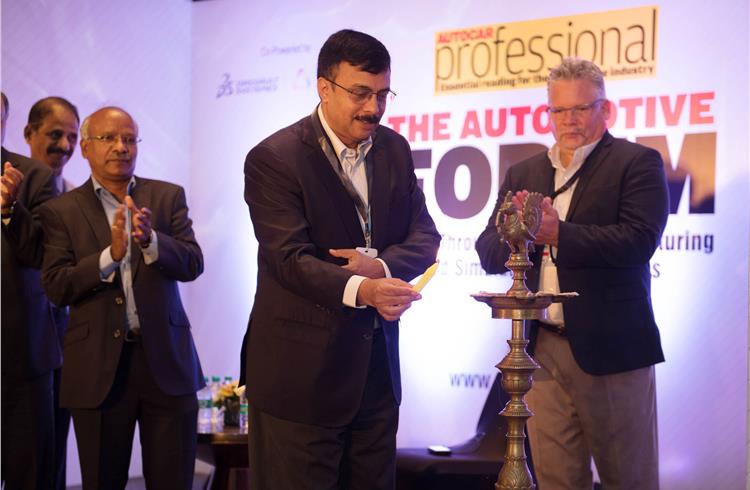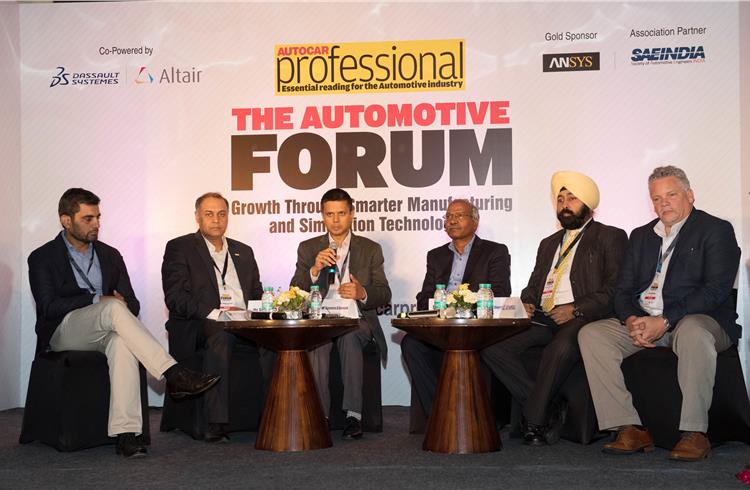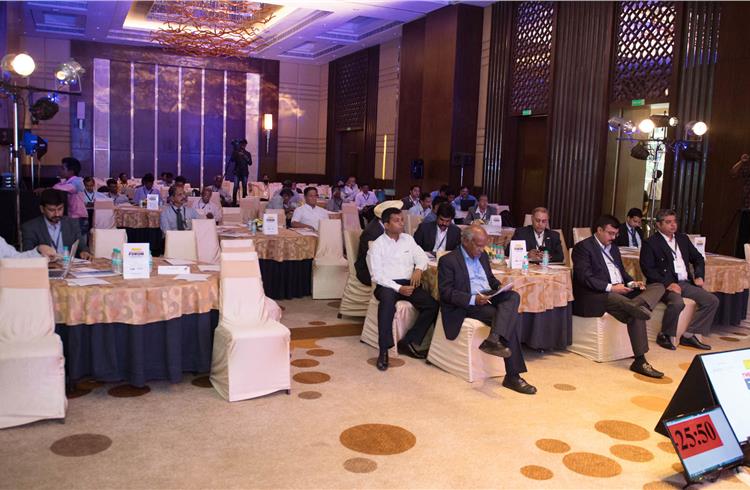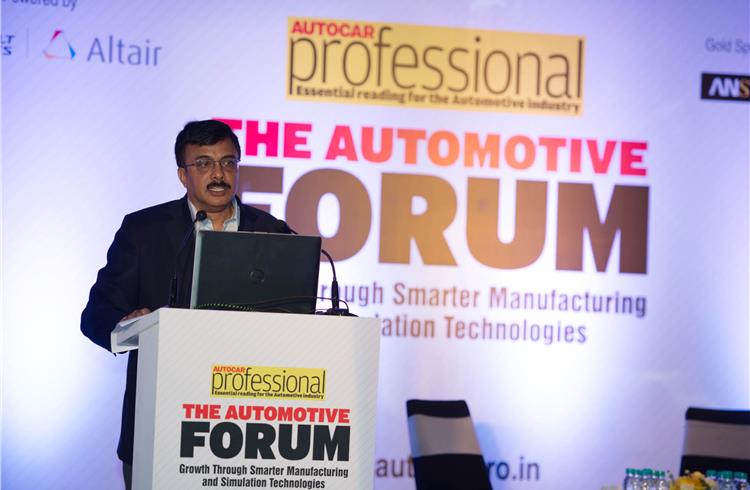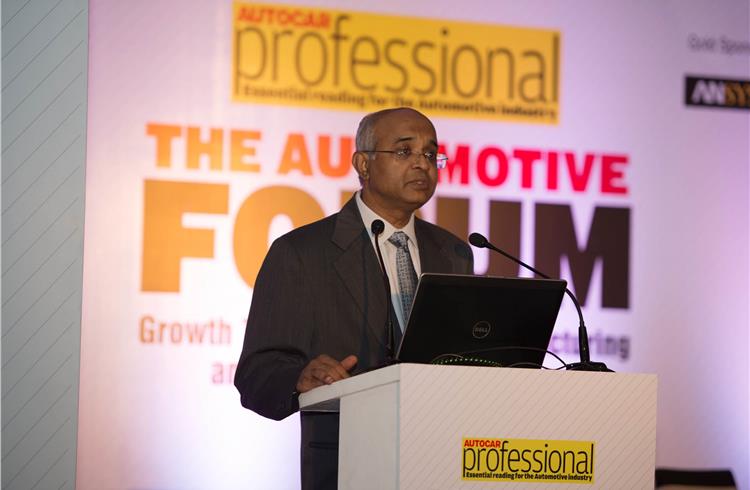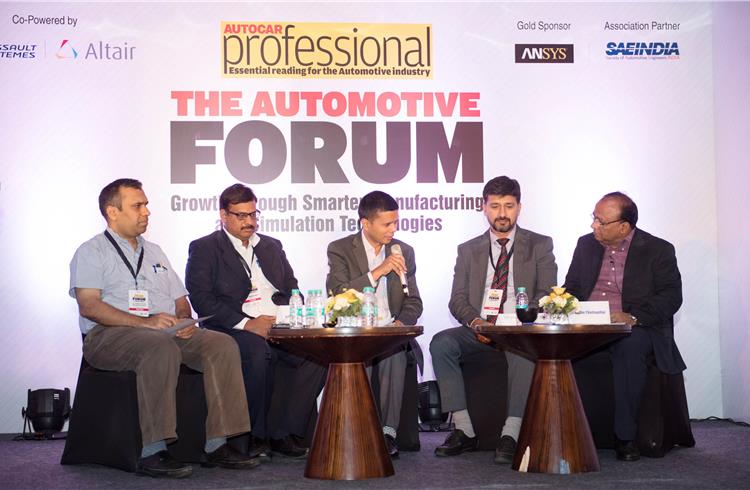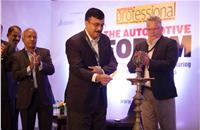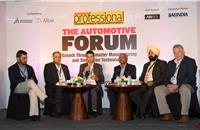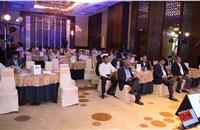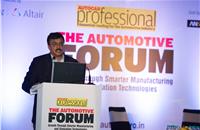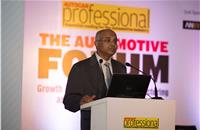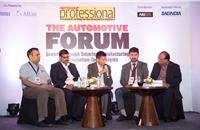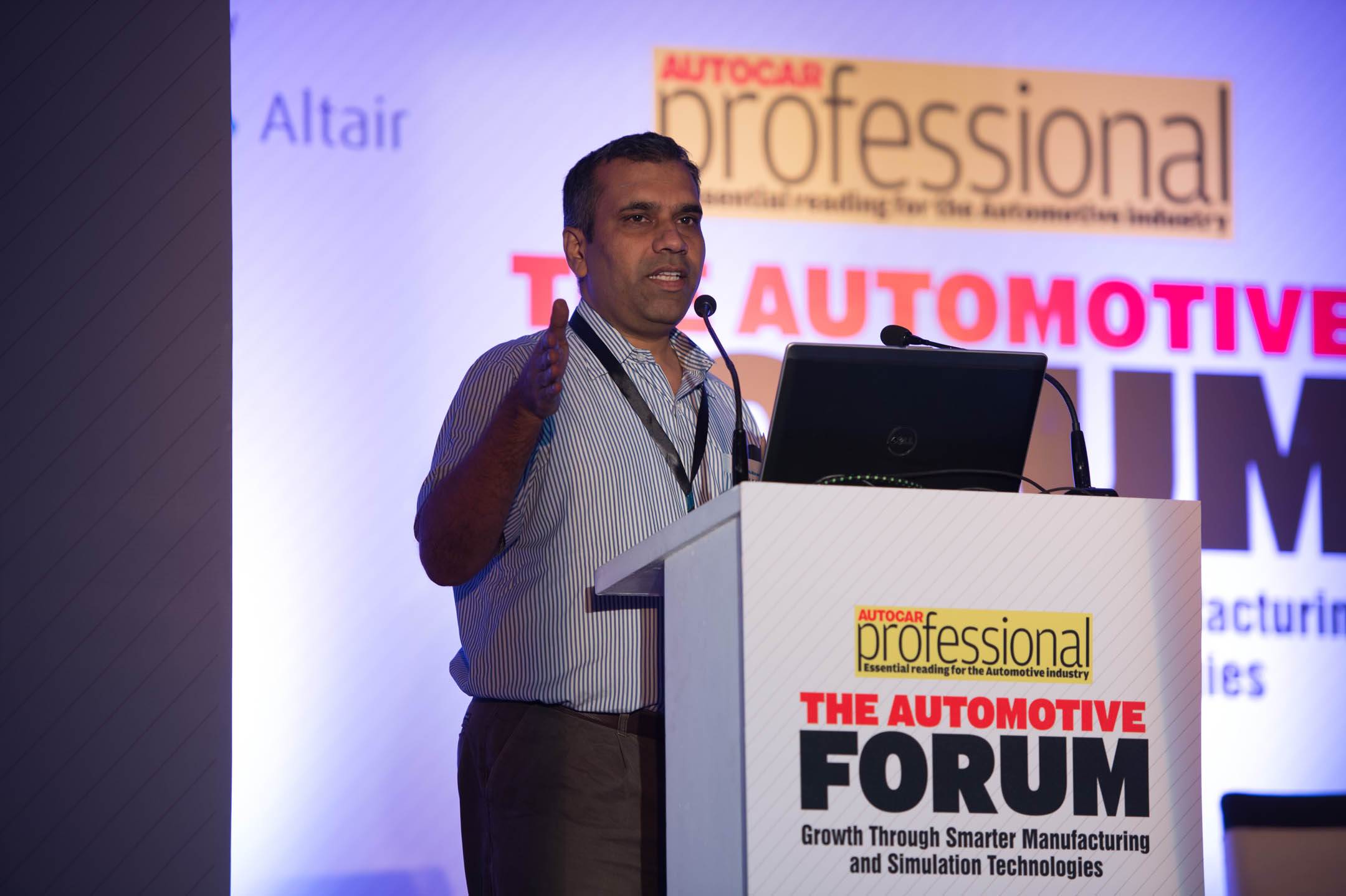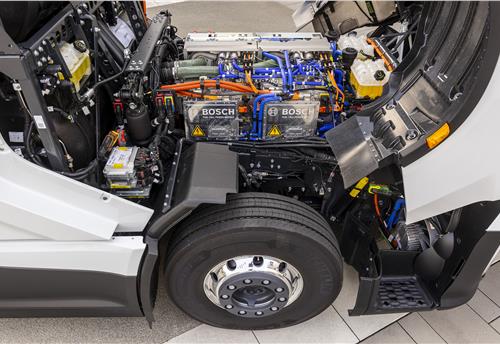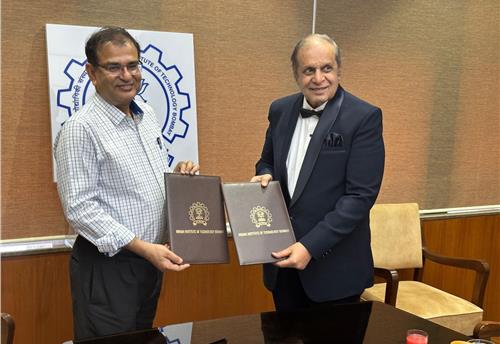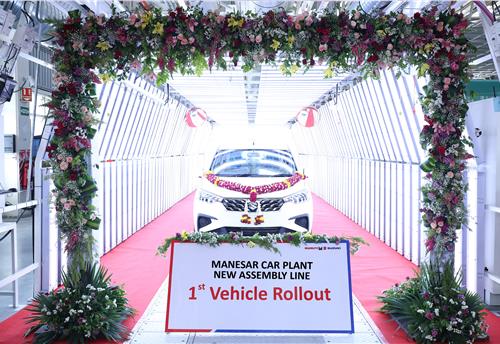Time for India to adopt smart manufacturing, say industry experts
Top-notch industry professionals at Autocar Professional’s The Automotive Forum in Chennai say the factory of the future will have to employ smart manufacturing and simulation in ample measure if India is to reap dividends.
All roads in Chennai on June 7 led to The Westin Chennai Velachery where Autocar Professional held The Automotive Forum on ‘Growth Through Smarter Manufacturing and Simulation’.
It was all about the connected shopfloor of the future, of Industry 4.0 or the fourth industrial revolution, the Internet of Things (IoT) and new-generation technologies like 3D printing. Industry 4.0 dynamically changes the rules of the game for manufacturing. Connecting real machines with information technologies and IoT increases productivity substantially. Companies that employ new technologies for Industry 4.0 are a lot more competitive because they produce at lower costs and meet customer needs with a lot more flexibility. Organisations that are prepared to implement industry 4.0 now will actively shape and lead the change in manufacturing.
The seminar’s aim was to generate debate and consensus on the advantages of smart manufacturing, the benefits and challenges of Industry 4.0, how new-generation simulation technologies can help enhance both innovation and profitability while reducing time-to-market significantly, and whether 3D printing is going to be a game-changer in the component manufacturing industry as it is billed to be.
The highlight of the day-long event, which saw attendance from over 150 delegates representing the entire automotive eco-system comprising vehicle manufacturers, component suppliers and the supply chain, was the galaxy of top-notch automotive industry professionals who made their presence felt with their incisive presentations, analysis and comments.
The latest edition of The Automotive Forum was extra special as it saw keynote addresses from two industry stalwarts – Dr V Sumantran and Vinod Dasari.
The seminar comprised two sessions. Session 1 was on ‘Challenges and Opportunities of Industry 4.0 and Manufacturing in the New Digital World – Enhancing Process Efficiencies, Improving Quality and Profitability’. Session 2 focused on the ‘Scope of Simulation Technologies in the New Disruptive World; Leveraging New Technologies for Growth and Profitability’.
Keynote address 1: Auto industry as India's GDP driver
Vinod Dasari, CEO and MD, Ashok Leyland, who is also president of SIAM as well as ARAI, set the tone for the seminar with his lively keynote address – ‘Charting the growth curve for Indian companies in a new automobile world’.

Dasari began by saying that Indian manufacturing has performed exceedingly well over the long term, growing steadily at a CAGR of 13 percent over 25 years. He said, India’s growth is superior to other economies and sectors excepting China. “India is among the fastest growing economies in the world and the auto industry is a big contributor.”
Detailing this, he said the Indian automotive industry contributes to nearly 50 percent of manufacturing GDP and also generates significant employment. Of the combined industry turnover of Rs 880,000 crore ($140 billion) in FY2016, the OE industry’s turnover was Rs 625,000 crore ($100 billion) and the component sector’s Rs 255,000 crore (S40 billion). While OEMs’ contribute 7.1 percent to GDP, parts makers’ share is 4 percent. Over 32 million people are employed by Indian Auto Inc — 2 million as direct employment and 30 million as indirect employment. Importantly, he said, India is today a globally competitive manufacturing base for exports.
Commenting on how increased personal consumption is driving growth, he said in India, value-driven consumers have driven industry to be very cost-competitive. Dasari, who exhorted engineers to leverage change in the auto industry by driving innovation, said “There is no need to cut and paste technology from Europe. Leverage change with Indian innovation. This is the era of India. Engineers should not look to the West for ideas, instead, develop your very own solutions tailored to the Indian market.”
Dasari also pointed out that India Auto Inc also needs to think of Design in India in addition to Make In india. Global automakers should use India as a design hub and not only as a manufacturing hub.
In his keynote address, he alluded to the Automotive Mission Plan 2026 which aims to propel India into the top three markets in the world for engineering, manufacture and export of vehicles and components, and will encompass safe, efficient, environment-friendly conditions for affordable mobility of people and transportation of goods, comparable with global standards, growing in value to over 12 percent of India’s GDP and generating an additional 65 million jobs.
Dasari spoke about the substantial — also termed disruptive — changes underway in manufacturing. He cited the big cost decreases in the past decade in processing power (50x), bandwidth (40x), data storage (20x, per MB), sensors (by 50%) and robots (by 25%). The expected areas of disruptive change, in his opinion,will be Industry 4.0, big data, analytics and telematics, autonomous robots, 3D printing, augmented reality and simulation.
Dasari spoke about how Ashok Leyland has made the leap towards being a data-driven organisation and has developed a comprehensive suite of analytical tools for sales, service, warranty and dealer viability. The company has successfully merged data with telematics and come up with the i-Alert vehicle tracking software.
Dasari said autonomous vehicles will come to India, albeit a little late. Speaking about robot density, he said India, with less than 30 robots per 10,000 employees, lags behind the developed world’s average robot density of 69 per 10,000 employees. He said, China plans to have an average of 150 robots per 10,000 staffers by the year 2025.
Summing up, he said the present time is India’s chance to drive change in the manufacturing world which it can by leveraging innovation.
Keynote address 2: Dr V Sumantran on the new disruptive age
The afternoon session began with a keynote address by none other than Dr V Sumantran. Chairman of Celeris Technologies and an advisor to several leading Fortune 500 companies in the automotive, industrial equipment, defence and aerospace sectors, he until recently was a special advisor to Carlos Ghosn, chairman, Renault Nissan Alliance. Dr Sumantran, who is a MISI Adjunct Professor at MIT (USA) and a distinguished Visiting Professor of IIT Madras, is currently writing a book on the future of the global auto industry with MIT.
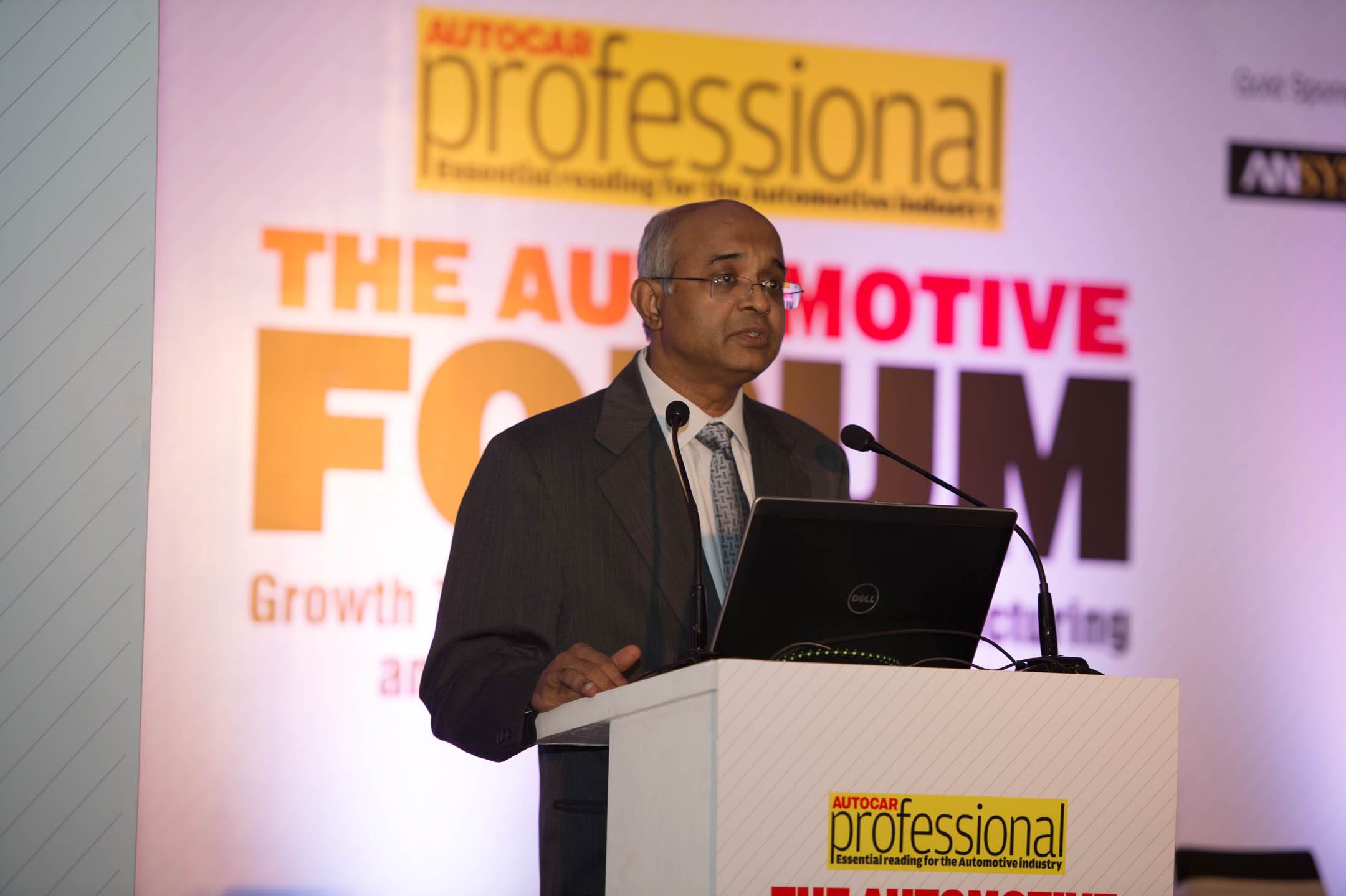
Dr Sumantran spoke on the new disruptive age, the impact on the automotive industry and the role of advanced technologies. Also, on what is driving this disruption, the tools and skills required to survive this disruption, and what the roles for cities, the auto industry, technologists and business should be.
Pointing out the speedy rise of urbanisation, he said that cities that occupy one percent of the world’s land mass are home to 55 percent of the global population. The extent of urbanisation can be seen from the fact that in 1900, 15 percent of the global population was in urban cities. This grew to 50 percent in the year 2000 and is estimated to accelerate to 65 percent by the year 2050. The impact of cities can be seen from the fact that at present 55 percent of the global population resides in cities, accounts for 85 percent of the GDP, 78 percent of the energy use and importantly 60 percent of CO2 emissions.
Dr Sumantran was candid when he said, “Global warming is the result of our appetite for fossil fuels. Transportation accounts for 66 percent of crude oil consumption and based on current trends, CO2 emissions from motorised transport can double by 2050.”
Even then the need for mobility will remain. Dr Sumantran said that the problem is immensely critical and mobility is going to force the automotive sector to change for the better.
The consumption of automobiles is going to see some major changes and the industry as a whole is going to witness more disruptions. Dr Sumantran foresees a big change in the way an automobile is seen now, and perhaps more so in the near future. For him "it was a hobby and a social window for my generation to fall in love with cars". Now cars have rivals in the form of electronic devices, with the mobile phone leading the pack. In some parts of the globe, youngsters are preferring smartphones/network connectivity over a car.
"Innovation usually is a tool, which society uses to either adapt or make life workable. Hence, currently, we could see the automotive sector working on a numerous innovative subjects, which could become the force of the industry over the next several decades," said Dr Sumantran. According to him, the disruptive elements for the industry today are three key things — electrified, shared, and intelligent/autonomous capability.
Electrification in the automotive industry, though a growing trend, is not simple, feels the technocrat. A "variety of technologies" like mild, plug-in hybrids, range extenders and the likes will play key roles. The acceptance and implementation of the technologies will also depend "largely" on geography, user profile and infrastructure.
Citing the example of China, which has adopted a policy of promoting electric vehicles, Dr Sumantran said that pure electrics is not the best option there as the major chunk of the power comes from high-sulphur coal. He commended India's efforts at scaling up renewable sources at a large scale. As the grid quality improves in moving from a low-efficiency grid to a high-efficiency grid, he feels, significant reductions in the overall CO2 footprint, by the use of EVs could be easily projected.
The talk touched upon connectivity, personalisation, shared and intelligent mobility as the other areas where the auto industry will witness disruptions. Dr Sumantran said that with all these multi-directional activities underway, the industry, right now, is facing a time of disruption. "There is no sympathy from investors or shareholders for the slightest drop in market share or declining profitability of the company. But the same executive is tasked with investing and planning for the company’s future. These are all the legitimate expectations of society and have been a consequence of this time of disruption," he said.
"But the automotive industry, without a doubt is going to find a way through this, and it is going to be a truly exciting journey," said Dr Sumantran at the end of his talk.
THE CONNECTED SHOPFLOOR OF THE FUTURE
The seminar comprised two sessions. Session 1 was on ‘Challenges and Opportunities of Industry 4.0 and Manufacturing in the New Digital World – Enhancing Process Efficiencies, Improving Quality and Profitability’. Session 2 was focused on the ‘Scope of Simulation Technologies in the New Disruptive World; Leveraging New Technologies for Growth and Profitability’.
Smarter way of manufacturing
The first speaker in Session 1 was P Kaniappan, MD, Wabco India, which designs, manufactures and markets conventional braking products, advanced braking systems, and other related air assisted products and systems.
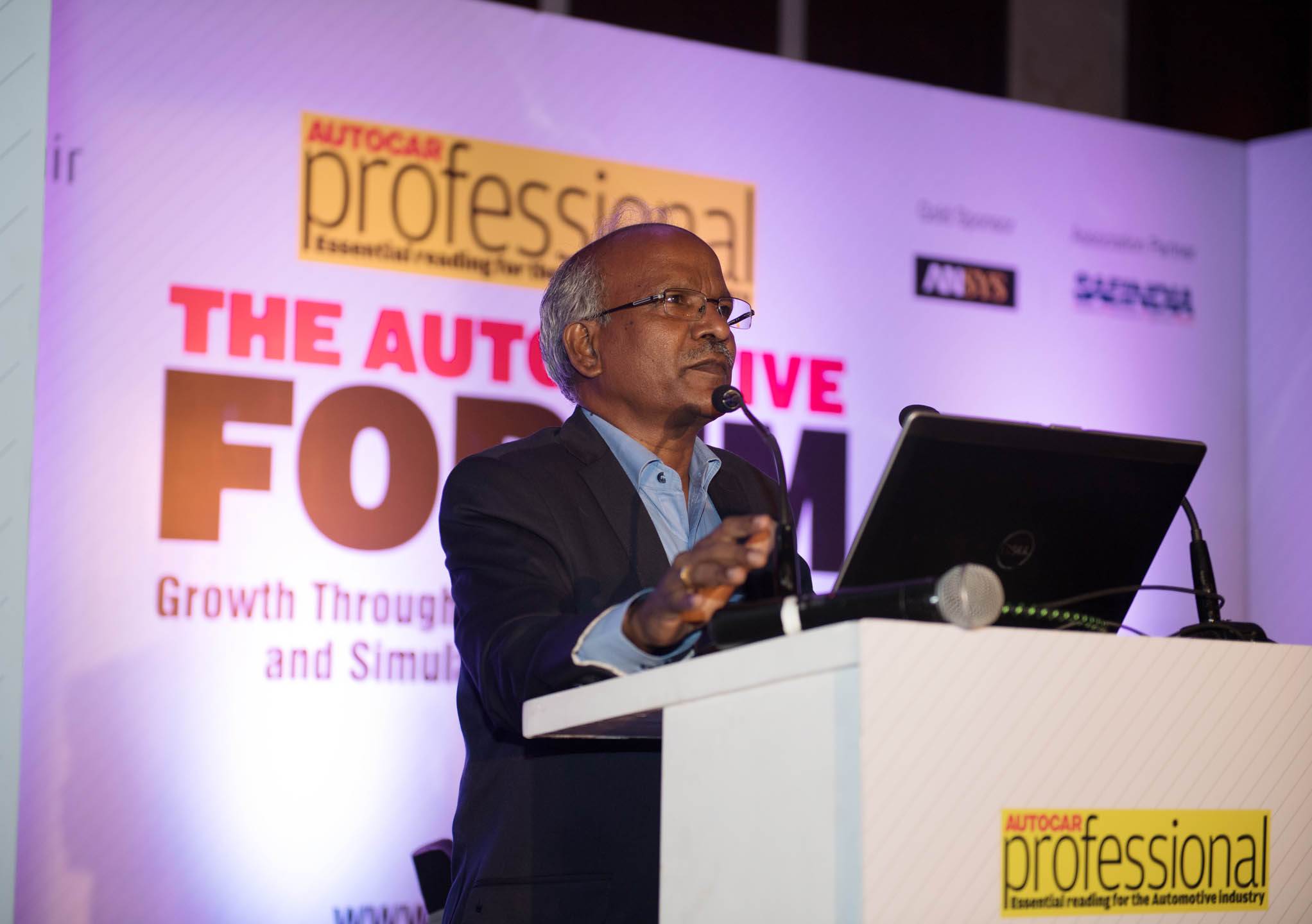
Kaniappan said, “Smart technology is transforming industry. We're today leveraging Industry 4.0 for automated guided vehicle, fleet management,,remote surveillance and robotic welding. Real-time process capability can be monitored by Industry 4.0. Barriers between the factory and the office no longer there. Under local for global, we are now manufacturing sub-assemblies for Wabco globally.”
Bosch bets big on Industry 4.0
Global technology and solutions provider Bosch, which is both a leading user and supplier of Industry 4.0 solutions, is betting big on the key business enabler. In India, Bosch has initiated the implementation of Industry 4.0 in all of its 15 manufacturing facilities in 2015. This, it says, has enabled it to offer improved levels of quality standards particularly in view of the ccompany's multi-domain approach with engineering and IT solutions. It also expects additional growth through connectivity solutions for products as well as for business and production processes.
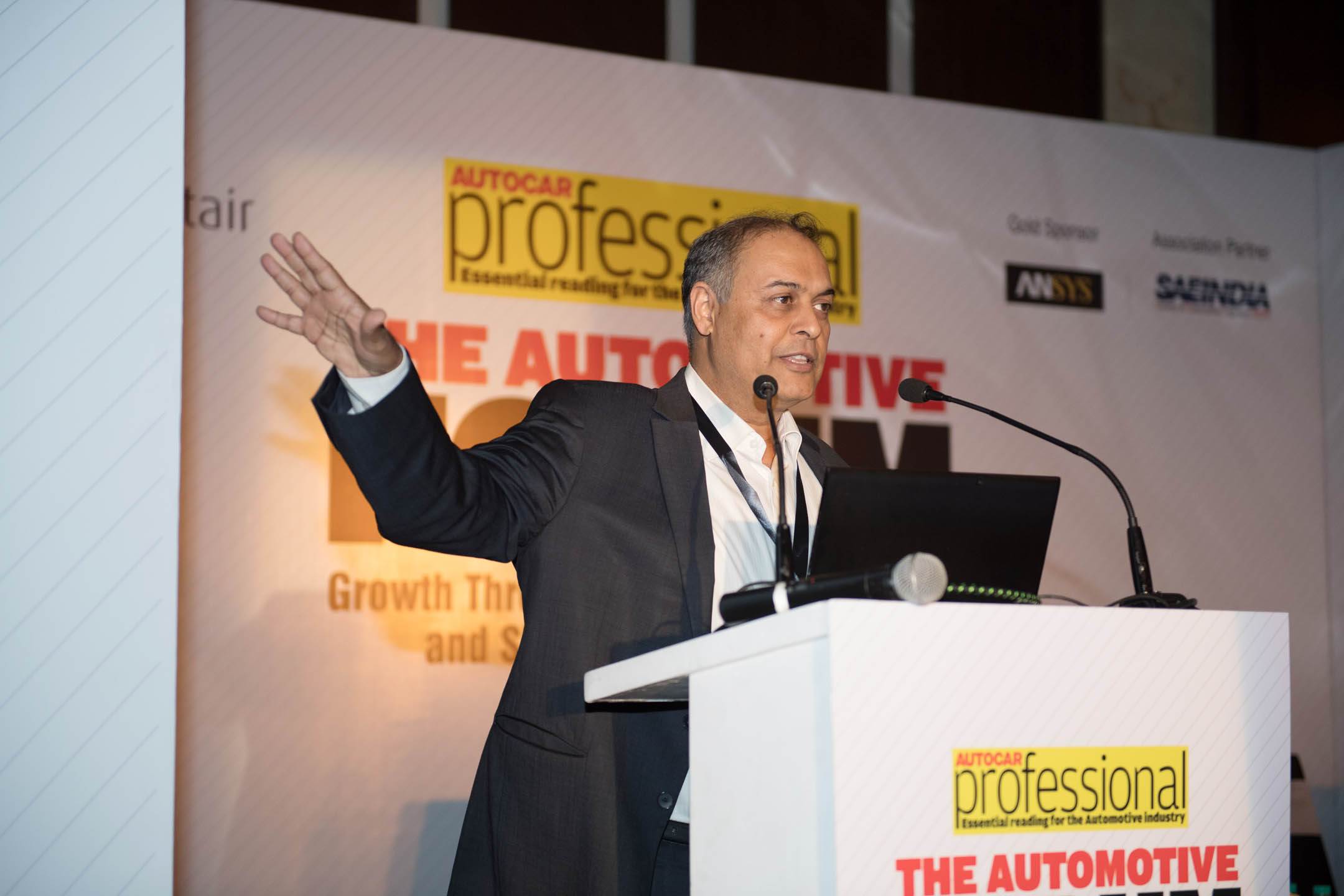
Representing Bosch at The Automotive Forum was Dattatreya Gaur, VP, Robert Bosch Engineering & Business Solutions. Gaur is bullish about smart manufacturing and his business unit designs and develops products in diverse domains – industrial automation and smart manufacturing, automotive electronics, steering and diagnostics, power tools, security systems, HVAC systems and home appliances. As a strategic leader for Industry 4.0, he mentors RBEI’s Connected Industry strategic initiative.
Gaur said, “Digitalisation is hugely impacting all our four business divisions to make manufacturing better. The shopfloor of the future is connected, smart and flexible. IoT and smarter manufacturing are changing the dynamics of industrial manufacturing. We're an early adopter and provider of Industry 4.0. By 2020 all our plants in India will be Industry 4.0 compliant.”
Optimising gains
Jeffrey (Jeff) Brennan, chief marketing officer, Altair Engineering Inc, USA, revealed how automakers can go about optimising gains with adroit use of simulation technologies. Brennan, who is considered a guru in optimisation technology, has extensive knowledge of optimisation methodologies across various industries including automotive.

Brennan began his presentation by saying, “Industry is witnessing a simulation-driven innovation revolution. Simulation has become a driver of design today.” Embellishing his comments with pictorial elements, he pointed out how simulation can now handle over 20 million elements for a single crash simulation and product validation, compared to 2500 elements in the 1980s.
Citing an example, he said Altair worked with Daimler to make the optimistion process of its windscreen antenna more efficient. The team jointly developed a windscreen antenna method within FEKO that represents the dielectric properties of multiple layers analytically, along with multi-port post-processing to allow different port configurations to be rapidly re-evaluated.
Brennan said, “Industry 4.0 and 3D are breaking down barriers. The democratization and proliferation of these technologies allows companies to gain a competitive edge and also shake thins up.”
3D as an enabler
Representing Dassault Systemes was Kanwaljeet Singh Virk, brand head – DELMA, Value Solutions. “Reconfigurable manufacturing systems help scaling of capacity efficiently. 3D is a key enabler for Industry 4.0 and connectivity in manufacturing is vital for transformation in manufacturing,” he said. “Understanding Industry 4.0 is critical to improving manufacturing in the best possible manner,” he added.
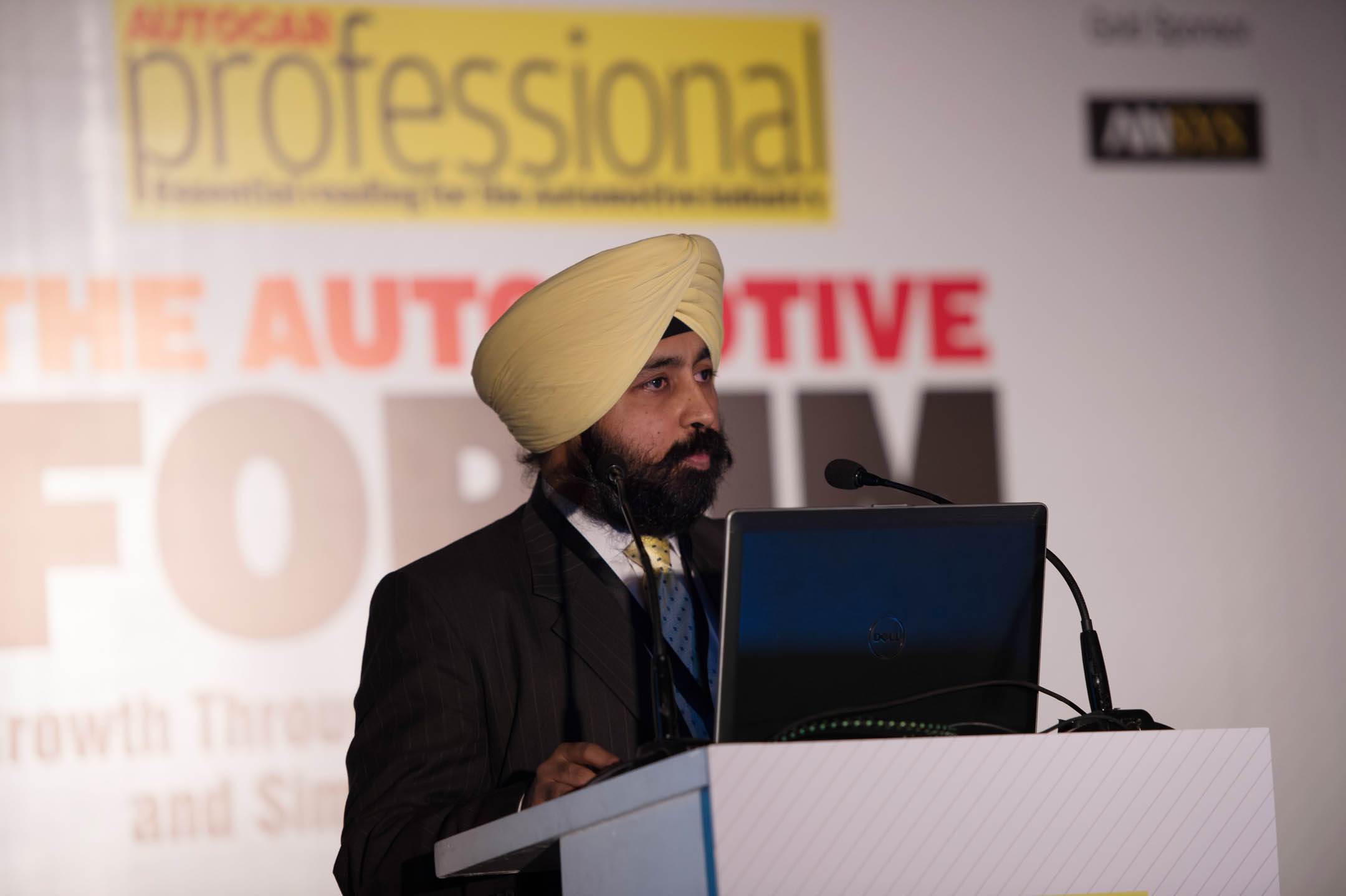
Virk, who is responsible for the company’s digital manufacturing business development, spoke about the 3D experience and the dynamic benefits it can bring users. He said, “Products by themselves are no longer enough. Consumers buy experiences, For instance, Tesla and Audi have reinvented the car buying experience digitally.”
He said the experience economy is transforming manufacturing. 3D is changing the way the way industry functions. From file-based and static designs, connectivity, data and hi-tech models What is pervading now is connected innovation with product delivery and all users; data-driven online innovation platform; and model-based combining multi-physics, behaviour modeling, big data, intuitive decision support and social collaboration. Virk detailed mega trends and challenges in manufacturing as:
Consumer experience
Mass customisation
Global manufacturing
Modularisation
Internet of Things
Smart Object (Cobotic/Logistic)
Remote Control
Paperless/Mobility
Additive Manufacturing
Virk said best-in-class innovators will combine digital with business transformation. He said Dassault Systemes enables Industry 4.0 through digital connectivity. This is essentially through the principles of engineer (configured product definition, digital mock-up, process plan, production simulation); optimize (resource planning, production, scheduling) and operate (manufacturing, logistics, quality, work instructions, maintenance and analytics).
As regards expected innovation for production systems in terms of reconfigurable manufacturing systems, he said capacity can be rapidly scaled in small increments, functionality can also be rapidly scaled to new products, and in-built adjustment capabilities enable rapid response to unexpected equipment failures.
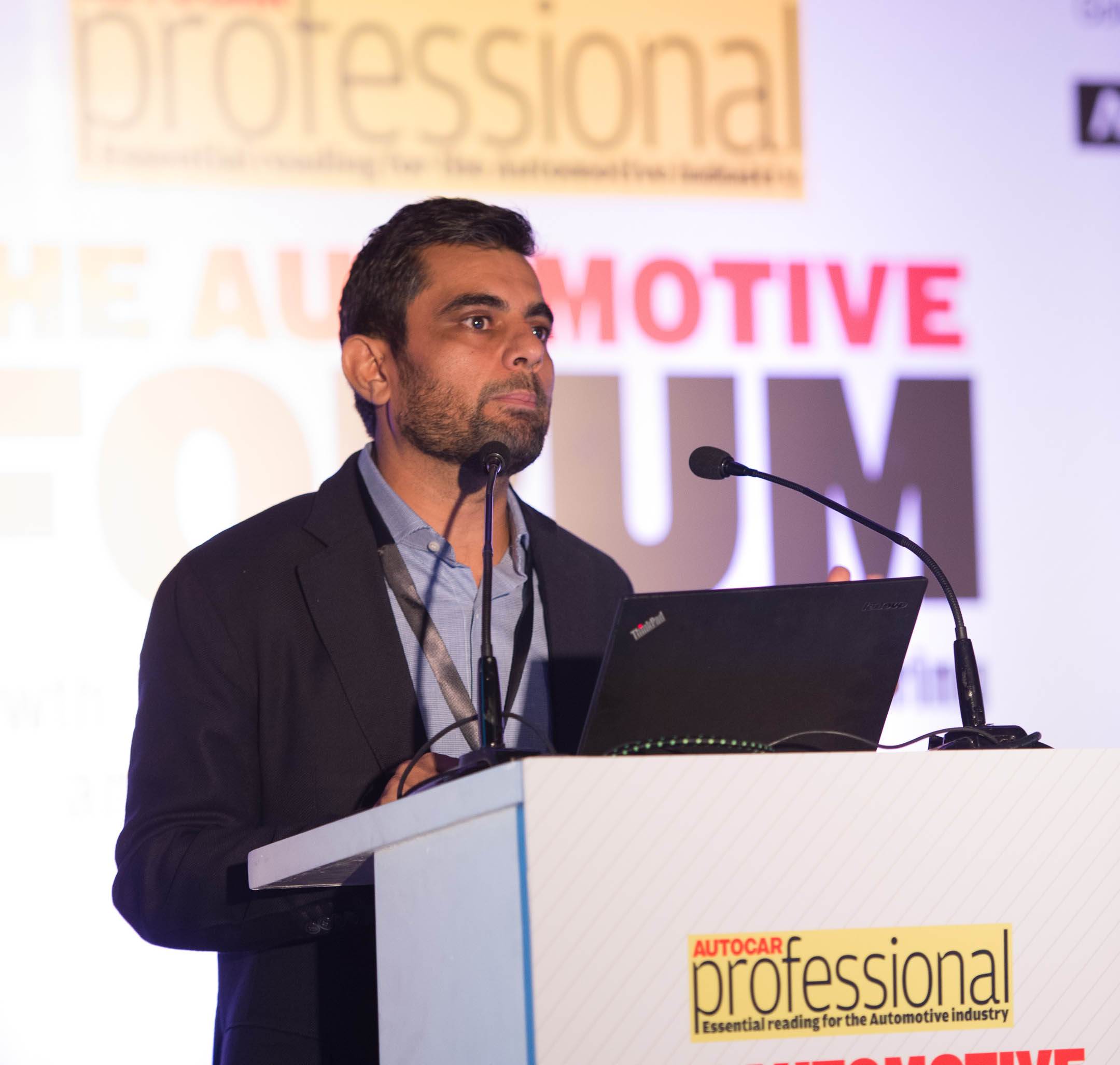
Bringing the first session to a closure fittingly was Rajiv Bajaj, MD, Stratasys India (pictured above), who is leading the company’s 3D printing business in the region. Bajaj’s presentation was on how 3D printing is becoming a critical contributor to the factory of the future. Citing an example, He showcased how Volvo Trucks replaced its metal lift tool with thermoplastic tool. Instead of 24 parts earlier, 3D allows only four.. “Our Infinite Build 3D Demonstrator allows 1-1000s of parts in any size.”
Dr Mangalaramanan, who heads a team of around 100 engineers in the domains of vehicle dynamics, NVH, steering, suspension and frames for buses and trucks, spoke about how simulation enables sizeable gains. Automation handles repetitive, monotonous tasks with ease and saves time while also enabling modular products with a huge number of variants, which can be virtually validated within a realistic timeframe. Essentially, it helps avoid manual errors and variations.
Highlighting the major advantages of simulation for composites, he said composites can be moulded into complicated shapes a lot more easily than most other materials. This gives designers the freedom to create almost any shape or form. The surface of composites can also be molded to mimic any surface finish or texture, from smooth to pebbly.
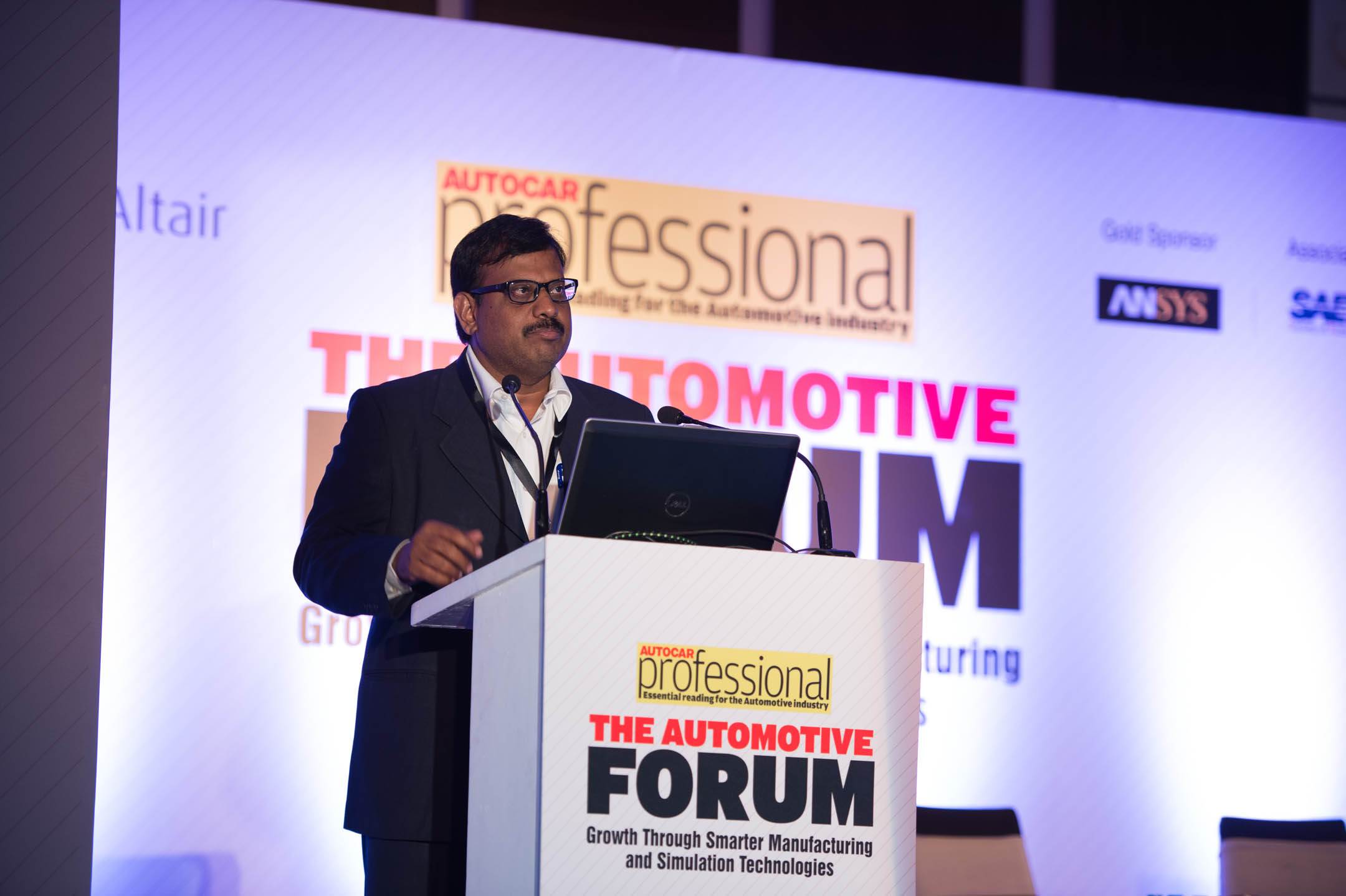
Dr Sundararajan T, senior GM – R&D, Wheels India (pictured above), spoke on the evolving requirement of lightweighting materials. “Regulatory requirements, robust designs and meeting future fuel efficiency and lightweighting targets are some of the challenges on the manufacturing front.”
He said 3D printing has seen a good response from the aerospace engineering industry and a number of critical components have been successfully incorporated into aircraft. However, he felt that the mass-product-driven industry like automotive may not be able to use the potential of 3D printing to its fullest because the industry is more comfortable with the idea of sampling, prototyping and then manufacturing on a mass scale.
That said, he pointed out that if demand for personalised vehicles grows sizeably in the future — as it looks to in some developed markets — 3D printing will play a big role in the automotive industry. Dr Sundararajan also elaborated on opportunities in lightweighting of vehicles, which is a continuous process. He said alternate materials help in reducing weight but added that steel is going to rule the roost in most of the components. Even if powertrains are fully automated, other components will continue to be steel based.
Padmesh Mandloi, senior technical account manager at ANSYS (pictured below), who has over 14 years of experience in engineering simulation, spoke on how the company's simulation platform is an enabler for auto components. He detailed three key megatrends including autonomy, digitisation and materials and how the simulation industry is working to help smart manufacturing in general and the automotive industry in particular.
He said 20 years ago, OEMs and Tier 1 and Tier 2 suppliers were in charge of most of the value of a vehicle. Now, the scenario has changed with the advent of the Internet of Things which is taking a share of that value. New trends like digitisation, ride hailing and ride sharing apps, along with autonomous technology, are taking a slice of the pie from traditional OEMs and suppliers. “What connects to all this is data that is extremely valuable to understand when it comes to next-gen mobility, which is one of the key megatrends of the future,” said Mandloi
According to Mandloi, "Simulation historically was used just by design engineers to analyse. Today, its scope has grown to also cover operators who are not engineers and as a result helped the entire value chain. The scope of simulation is increasing for design engineers who are conducting analysis and working across the entire lifecycle of the vehicle."

All in all, it was an engaging day for the automotive fraternity. For the industry, which is seeing rapid, exponential change from the design stage through to the shopfloor, constantly charged with the challenge of getting products faster to market in the face of fast-changing consumer preferences, virtual engineering – or simulation – is the mantra to staying ahead of the game.
Virtual engineering, which facilitates testing of manifold designs in a risk-free manner, when combined with smart manufacturing or Industry 4.0, has the potential to deliver handsome gains to automakers. Many companies the world over are already reaping the dividends of such advances.
It is time India, where innovation is the preserve of skilled engineers, adopts Industry 4.0 in its entirety. As Ashok Leyland’s Vinod Dasari said, India has the opportunity to lead the world with Industry 4.0, to design, develop and market products that have the potential to turn conventional manufacturing on its head.
RELATED ARTICLES
Bosch hydrogen engine tech-powered truck to be on Indian roads this year
The global supplier of technology and services is betting big on both electromobility and hydrogen. While announcing the...
IIT Bombay inaugurates Arun Firodia Research Floor
IIT Bombay, one of India’s top technical and research institutions, honours Kinetic Group chairman Dr Arun Firodia, one ...
Maruti Suzuki expands capacity at Manesar plant by additional 100,000 units
New assembly line at Plant A expands total manufacturing capacity at the Manesar plants to 900,000 units per annum. Alon...





 By Autocar Pro News Desk
By Autocar Pro News Desk
 09 Jun 2017
09 Jun 2017
 38180 Views
38180 Views



